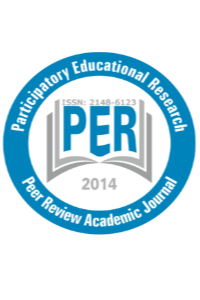
Participatory Educational Research
Yazarlar: Keziban ORBAY, Ruben MİRANDA, Metin ORBAY
Konular:Eğitim, Bilimsel Disiplinler
DOI:10.17275/per.20.26.7.2
Anahtar Kelimeler:Journal Impact Factor,JIF Quartile,Academic Performance Assessment,Web of Science
Özet: This study aims to provide information about the Q Concept defined as the division of journal impact factors into quartiles based on given field categories so that the disadvantages resulting from the direct use of journal impact factors can be eliminated. While the number of "Original articles published in the Web of Science (WoS) database-indexed journals like SCI, SSCI and A&HCI" is an important indicator for research assessment in Turkey, neither the journal impact factors nor the Q Concept of these papers have been taken into account. Present study analyzes the scientific production of the Amasya University researchers in journals indexed in WoS database in the period 2014-2018 using the Q concept. The share of publications by Q category journals as well as the average citations received by the works from Amasya University were compared to the average situation in Turkey and other different countries in the world. Results indicate that the articles published by Amasya University researchers were mostly published in low impact factor journals (Q4 journals) (36.49%), in fact, only a small share of papers were published in high impact journals (14.32% in Q1 journals). The share of papers published in low impact journals by researchers from Amasya University is higher than the Turkish average and much higher than the scientific leading countries. The average citations received by papers published in Q1 journals was around six times higher than papers published in Q4 journals (8.92 vs. 1.56), thus papers published in Q1 journals received 30.02% citations despite only 14.32% of the papers was published in these journals. The share of papers published which were never cited in WoS was 27.48%, increasing from 9.68% in Q1 to almost half (48.10%) in Q4. The study concludes with some suggestions on how and where the Q Concept can be used.
Dergi editörleri editör girişini kullanarak sisteme giriş yapabilirler. Editör girişi için tıklayınız.